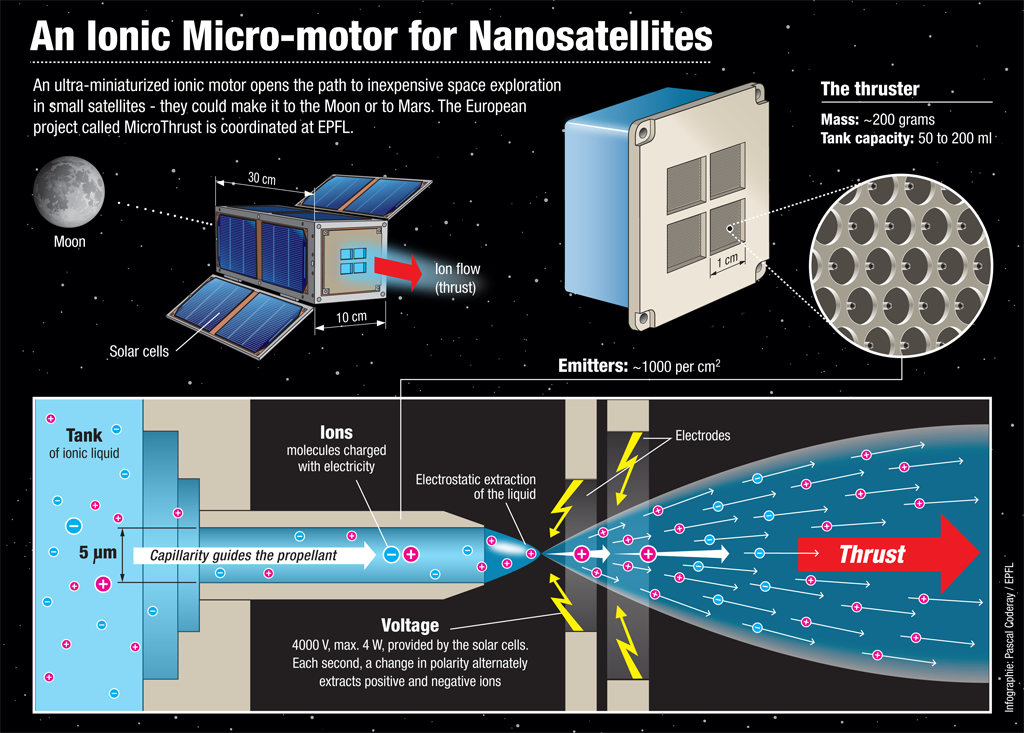Ionic-powered nanosatellite can go to the Moon on drops of fuel
March 29, 2012
The first prototype of a new, ultra-compact motor that will allow small satellites to journey beyond Earth’s orbit is just making its way out of the EPFL laboratories. The goal: drastically reduce the cost of space exploration.
The motor, designed to be mounted on satellites as small as 10x10x10 centimeters, is extremely compact but highly efficient. The prototype weighs only about 200 grams, including the fuel and control electronics.
Cost-effective nanosatellites currently lack an efficient propulsion system that would render them truly autonomous and thus able to carry out exploration or observation missions. “At the moment, nanosatellites are stuck in their orbits, explains Herbert Shea, coordinator of the European MicroThrust project and director of EPFL’s Microsystems for Space Technologies Laboratory.
A motor that doesn’t burn fuel
The motor runs on an “ionic” liquid — the chemical compound EMI-BF4, which is used as a solvent and electrolyte. Fuel is not burned; it is expelled: the flow of ions is emitted from an array of tiny silicon nozzles — over 1,000 per square centimeter.
The fuel is first guided by capillary action from a reservoir to the extremity of the micro-nozzles, where the ions are then extracted by an electrode held at 1,000 volts, accelerated, and finally emitted out the back of the satellite. The polarity of the electric field is reversed every second, so that all the ions — positive and negative — are ejected.
After six months of acceleration, the microsatellite’s speed increases from 24,000 km/h, its launch speed, to 42,000 km/h. The acceleration is only about a tenth of a millimeter per square second, which translates into zero to 100 km/h in 77 hours.
“We calculated that in order to reach lunar orbit, a 1-kg nanosatellite with our motor would travel for about six months and consume just 100 milliliters of fuel,” explains Muriel Richard, a scientist in EPFL’s Swiss Space Center.
The ionic motor will initially power CleanSpace One — a nanosatellite whose mission is to grab space debris and pull it into the Earth’s atmosphere to be safely incinerated.
